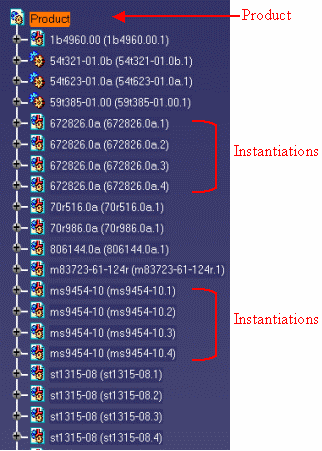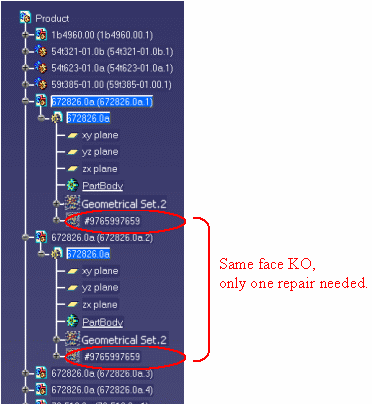There are however some specificities for STEP data, they are detailed just below:
What you need to know
STEP files may describe assemblies that contain CATParts. The result of the conversion is a Product which contains several components.
=> If needed, each part can be analyzed and corrected individually.

If the components have links between them (for example instantiations), the links are recreated in the product.
=> Corrections on the source part are automatically reported to instances.

- please refer to the next chapter entitled STEP: Best Practices - How to create a topology
- or use the application Healing Assistant for more complex cases.
![]()